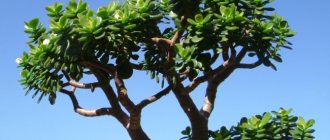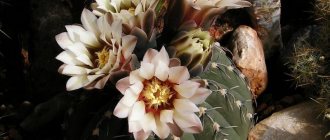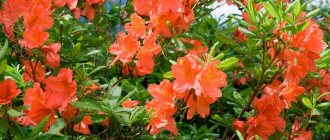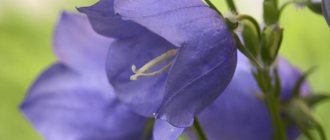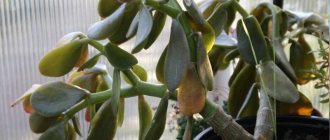» Feng Shui » The meaning of trees in Feng Shui
0
1029
Article rating
Residents of China use Feng Shui wood to harmonize home and office space in the interior. Depending on its type, with the help of such a living talisman you can attract good luck, strengthen family relationships or build financial well-being.
The meaning of trees in feng shui
Beneficial properties of coffee beans
The homeland of the tree that produces useful fruits is the tropical region of Ethiopia. But experts have learned to grow a coffee tree with their own hands and recommend everyone who wants to start growing this tropical plant.
Many nature lovers have long been growing coffee trees at home and enjoying its magical fruits.
The perennial crop gives an annual growth of 5-10 centimeters. The coffee tree lives and bears fruit well for a very long time. Even at 100 years of age it can produce a good harvest.
Caffeine
The coffee tree and its seeds contain caffeine, an active substance that has a stimulating effect on the cardiovascular system and central nervous system. For drug or alcohol poisoning, coffee is also used.
In addition, coffee copes well with low blood pressure, headaches, “like a hand” it relieves tension, stress, fatigue, relieves depression, bad mood, adds energy, increasing performance. It is also useful because it improves brain function and blood circulation.
Caffeine is found in many medications. Caffeine charcoal is obtained from the fruit, which contains vitamins and microelements. It is used for bloating, increased gas formation and poisoning. An infusion of raw grains helps with arthritis and also reduces the level of uric acid in the body.
Medicinal properties of coffee
Drinking coffee improves the performance of the heart and respiratory organs, but you should not abuse coffee, especially for people with heart disease.
You can drink a little in case of asthenia, severe fatigue, sleepiness, fatigue, to activate mental activity.
A simple recipe will relieve headaches: raw tree grains, 1 tbsp. spoon, pour a glass of boiling water, wrap. In an hour the infusion will be ready. Drink the infusion three times a day after meals, 1/3 cup.
Esoteric properties of the coffee tree
In addition, the “green pet” has rare esoteric abilities that can influence people’s lives, bring prosperity to the family, absorb negativity in the house, extinguish aggression, and smooth out conflicts.
If a tropical exotic grows in the house, then generations of different ages begin to respect and understand each other better, and old feelings return to the spouses.
In addition to protecting the family from conflicts, exotics attract wealth to the home, promote business development and improvement in the profession, help build a career and awaken the talent of a financier.
The importance of wood for improving mood is great. The plant radiates so much positivity that people stop noticing only the bad in life, begin to feel confident, and become determined to overcome gloomy circumstances.
Bonsai
An artificial bonsai tree, translated as “landscape in a pot,” can significantly affect the state of the energy field in the room where it is located. The created composition is capable of:
- smooth out the influence of sharp corners for the free flow of energy,
- attract positive energy to the dark corners of the room to neutralize the negative flows accumulated there,
- harmonize fire and water energy in the kitchen area,
- stop the outgoing flow of positive energy from the room,
- stimulate the effectiveness of the eastern health sector and the southeastern wealth zone.
This composition fits well into any interior, and the use of a bonsai with a slight bend is considered a welcoming gesture among Chinese office workers.
Features of growing at home (briefly)
Where is the birthplace of the coffee tree today? It is grown in 70 countries around the world, for example, in Brazil, Indonesia, on the island of Java, as well as in all countries with a tropical climate. Today, many gardeners grow this wonderful tree in their greenhouse.
There is an opinion that this is a very demanding and capricious culture. But that's not true. Coffee trees are not so sissy if you follow the rules of care:
- Like all tropical crops, coffee loves warmth - in summer - 22-30ºC, and in cold weather - 13-15ºC. Humidity - 65-70%.
- Watering with water, which should stand for a couple of days. In the summer, every 2 days, in the winter - when the soil in the flowerpot is completely dry.
- Fertilize with organic matter twice a month.
- Loves light, can be placed on northern and western window sills.
- Replant once every three years in slightly acidic soil. It can be propagated vegetatively or by grains.
- The coffee tree should be removed from drafts, not filled with water, and placed further away from fiery heating radiators in winter.
But the main feature of growing coffee is that the tree does not like to be often turned first one way or the other, that is, there is no need to turn the flowerpot in different directions. Let it stand as it was placed, otherwise it will shed its blooming attire. To make the crown seem lush, you can install a mirror next to it.
What flowers can you keep at home?
Flowers significantly decorate the interior, please the eye and improve the psychological atmosphere. Below we will talk about what flowers can and should be kept at home for well-being.
Uzumbara violet
Another name for the Uzumbara violet is “flower of love.” It is best if it is white - then there will be peace, happiness, love and harmony in the family. Pink and blue violets are best placed in the kitchen.
Aloe
Aloe is a healing flower, rumors about its harm are nothing more than a fairy tale.
Since ancient times, this plant has brought only good energy to the house; the juice of this plant is added to many cosmetic products, as well as medicines. aloe is a medicinal house plant
Myrtle
Myrtle is considered a very positive plant; it is strongly recommended to keep it in the house. Myrtle brings quick love to unmarried girls, and long and strong marriage to married girls. Myrtle is often given to newlyweds on their wedding day as a symbol of love.
Anthurium
Anthurium is considered a male plant; it literally attracts male energy into the house and gives happiness to all single girls. Thanks to Anthurium, family relationships improve, quarrels and squabbles leave the house, and a pleasant aura appears.
Schlumberger's Decembrist
Schlumberger's Decembrist got its name because it blooms in winter, in December. This flower literally spreads “vibes of happiness and goodness” around itself. Even selfish people become better people with it. It is believed that if this plant begins to bloom at the wrong time, it is only because there is a favorable atmosphere in the house.
Ficus
Ficus definitely has no place in the bedroom; it is best to place it in another room.
Ficus has powerful energy that can drive away negativity and aggression from the home. Some believe that ficus can bring peace and tranquility to the home, as well as cope with anxiety and depression. ficus will be useful for people's energy, but it is better not to put it in the bedroom.
First of all, there should be no climbing plants in the house, as they take love away from the family. These include:
- Golden mustache;
- Tradescantia;
- Epipremnum.
Other homewrecker flowers, and which of them an unmarried girl should not keep in her house, are described below.
Birch
The Birch flower is popularly considered a muzhegon. It will not be easy for an unmarried girl to arrange her personal life, since the birch tree does not tolerate male energy around her. For this reason, the birch flower should not be kept in your home, nor should married couples.
Chinese rose
The rose is everyone’s favorite and most popular flower; it is called the “queen of flowers.” Undoubtedly, the Chinese rose is a very beautiful plant, but it is fraught with danger for young girls and married ladies. People say that a rose is able to draw the energy of love from the house, being in some way an “energy vampire.” There is no return from the rose.
Orchid
The orchid is quite demanding to care for; it has very beautiful and eye-catching flowers. But behind external beauty hides the ability to absorb the energy of the household. They say that an orchid blooms due to the shortcomings of its owners. In addition, its presence in the house can disturb your sleep, for this reason, do not place it in the bedroom.
Begonia
Begonia is a very popular flower, but it is better not to keep more than one pot in the house. It cannot be said that begonia carries exclusively negative energy, but it can do a disservice to unmarried ladies by taking away self-love. True, she still gives some of the positive energy in return.
Tulips
Tulips are the most spring flowers; this plant has many fans. Tulips in the house can disturb the peace and “give” insomnia; they can only be kept in the kitchen. Tulips can also lead to hair loss and deterioration in a girl’s appearance.
Fern
Fern is good to grow in a garden or greenhouse; it is not at all suitable for an apartment. The abundance of ferns in the house can cause severe headaches, since their flowers emit large amounts of carbon dioxide. In addition, a fern can discourage fans from you.
Tuberose
The aroma of tuberose is very attractive; it is often used in the preparation of perfume compositions. But if you are in a relationship, then tuberose will affect them in the most negative way.
Of course, the question of whether it is possible to keep flowers at home is rhetorical. Of course, it is possible and even necessary. However, not all flowers are “equally beneficial.”
Details on caring for your coffee tree at home
From the beginning of April, the coffee culture begins to develop and bloom, continuing to be active until October. But the color of a coffee tree cannot be seen immediately, but only with proper care in the 3rd or 4th year of its life.
During flowering, white flowers appear on the tree, in which the inflorescences are collected in a bouquet of 4-6 pieces. They grow from the axils of leaves and have a pleasant aroma similar to jasmine.
Let's take a closer look at the stages of care to see all the splendor of the coffee tree.
Temperature
If we grow coffee trees at home, we must set the desired temperature. For good growth and development of coffee culture, the best temperature is 23 degrees. If it is hotter in the greenhouse, then with increased air humidity, the seedlings will also be comfortable.
In the winter cold they are entitled to rest. To do this, the temperature must be reduced to 12-15 degrees.
Spraying
If the summer is rainless and the room becomes too dry, then the coffee tree will not refuse daily spraying with warm water. In winter, spraying should be stopped. But if the tree is close to heating radiators, then life-giving spraying should be continued.
To protect seedlings from attack by pests, once a month you can apply a leaf-to-leaf treatment with an infusion of ash.
Lighting
How to grow a coffee tree at home, where to place the flowerpot? The tree does not particularly need the hot rays of the sun to burn it. He will be comfortable near windows or on north or west windows.
If the plant does not bloom for a long time, you will have to create additional lighting or move it from the shadows to a well-lit window.
Watering
You should not overwater the plant, even though it is a guest from the tropics. This tropical crop does not tolerate waterlogging, and especially stagnation of liquid in the pan. There is also no need to allow the soil to dry out.
Before watering, check the dampness of the soil at a depth of 2-3 cm. To do this, lower a wooden shovel into the soil, and you can check with your finger. If the soil is damp, water it after a couple of days, also checking the moisture content of the substrate.
Particularly urgent watering will be required when the leaves of the coffee tree lose their elasticity and droop. The condition of the foliage is an excellent signal for watering.
Pot
Coffee trees are usually sold in small flower pots. When replanting, do not try to take a pot much larger than the store-bought one. Look at its root system and choose a pot 3-4 cm larger than the old one.
In large flowerpots, the soil will begin to sour, which will lead to the death of the coffee tree.
Priming
The soil for a coffee tree should be slightly acidic, clayey with a lot of organic matter. This substrate is sold in flower shops. Suitable soil for gardenias or azaleas.
Not all lovers of exotic guests buy ready-made soil, because they only trust soil prepared with their own hands.
Soil for a coffee tree: take 1 part each of garden soil, humus, peat soil and river sand. Before planting, the soil must be disinfected by sprinkling it with a manganese solution.
Pebbles, expanded clay, broken bricks washed to clean water are suitable for the drainage layer. A layer of activated carbon must be placed on the drainage layer to prevent rotting of the roots.
Feeding and fertilizer
In order for a coffee tree to delight with lush greenery, it needs specific nutrition. How to choose fertilizer for a coffee tree? When should I add them?
How to fertilize:
- From March to May, they are fed with nitrogen fertilizers;
- In summer in June - mineral fertilizers and organic matter are applied once each;
- In July and August, once every 2 weeks, the coffee tree is fertilized with potassium phosphate, excluding all organic matter;
- In autumn in September, spray with a solution of potassium salts.
Once a month, the substrate is acidified with a solution of citric acid - 1 g per liter of water.
Replanting a coffee tree
How to grow coffee to see the tree in bloom? It cannot be kept for a long time in a small container and an old substrate without nutrients. It needs a mandatory transplant for flowering and ripening of berries.
First, the soil for the coffee tree and a container for replanting are prepared, and then a drainage layer of 2-3 centimeters is poured into it.
The coffee tree is replanted every 3 years, maybe every 4 years if it feels good.
Transplant process:
- Remove the coffee tree from the old pot and inspect the roots.
- Cut off rotten and dry shoots, sprinkle with charcoal powder, and let dry for 2 hours.
- Immerse a healthy root system into the soil so that the root collar is raised 5-7 cm above the ground.
- Fill the volume of the pot around the roots with new substrate. The soil for the coffee tree must have good air permeability, this is important.
- Pour over warm, settled water.
- After 2-3 days, lightly loosen the top layer of the substrate.
Trimming
To prevent the indoor coffee tree from growing too much, it must be pruned. If a florist wants to get a standard tree, then there is no need to do pruning. It has been noticed that after such manipulation the trunk stops its growth.
The coffee tree begins to thicken, reaching a height of 60-80 cm. In this case, the standard look is obtained without much effort. The coffee plant is often grown as a bush, cutting off excess shoots from the crown.
In the first year, the shoot of the plant grows upward and does not branch, so there is no need to pinch it. Coffee branches begin to grow in the second year.
If you want to get a standard with a dense crown, then at the end of February or beginning of March, the constriction is done:
- The trunk, which has grown to 25–30 cm, is tied with wire at a height of 15–20 cm, just below the nodes.
- The top bud is cut off, and the trunk is trimmed, leaving 2 internodes above the wire.
- Then all the branches growing upward above the wire are cut off.
- The remaining branches are trimmed so that the tree takes on a beautiful appearance.
- After 3-4 years the constriction is made weaker, and after a month it is removed. As a result, a short tree remains, about 60 cm, and the crown diameter is 1.5 meters.
Bloom
The coffee tree blooms no less fascinatingly than Japanese sakura. During the flowering period of this culture, many lovers get married to catch the magical beauty.
How does this exotic bloom? Each bud produces 3-4 white flowers. The buds grow in clusters along the stem and emit a rich jasmine scent.
Flowering does not last long, only three days. But a flowering bush is an incomparable spectacle.
When the flowers fall, round growths remain in their place, from which berries will then appear. But you will have to wait 3-4 years for such a wonderful period, only with a mandatory dry wintering.
Rest period
Plants such as the coffee tree require winter dormancy. The tree should go to rest starting in October.
Care during rest:
- The temperature must be set to 15 degrees, not lower than 12;
- Water only when the top layer of soil is completely dry;
- If the plant is located inside a room, it requires additional lighting for several hours a day.
- At the very beginning of March, the seedling is taken to another, warmer room.
Is it possible to leave without care while on vacation?
The plant will not die if it is prepared:
- It is recommended to remove inflorescences or fruits, otherwise the plant will not have enough moisture;
- If there are a lot of shoots on the bush, you can pinch them to slightly stop their growth;
- Before leaving for vacation, the tree is placed on a wet foam mat, which is placed in a basin of water. In this case, the drainage hole in the flowerpot should be plugged with a piece of foam rubber, but not too tightly;
- You can buy automatic watering, which will provide access to moisture when the plant needs it, and so on for 2-3 weeks.
Preparing for winter
In the fall, simple procedures need to be carried out so that the tree survives the winter.
How to care for a coffee tree in the fall when retiring:
- The coffee seedling can be placed on a south window, reaching a room temperature of +15 °C.
- On cold and cloudy days, it is necessary to turn on fluorescent lamps.
- Reduce watering, but do not allow the soil in the pot to dry out too much.
- From October to March, stop applying fertilizers.
Folk signs and superstitions
Don’t be alarmed - not all flowers make the atmosphere in the room unfavorable. There is a list of plants that you should take note of.
cacti
The cactus does not have negative energy if it is located in the kitchen or hallway.
You can’t keep it in the bedroom, otherwise it can make the spouses “prickly” and cause them to quarrel. There is a version that it is useful to place a cactus next to the monitor while working - this way it absorbs electromagnetic radiation and reduces its impact on humans. The cactus is also called a male plant - people believe that it strengthens vitality. cacti decorate residential interiors
Ivy
Ivy is appropriate in a man’s apartment, but in a woman’s apartment it can harm the personal happiness of the hostess. It is believed that ivy is an “owner” and will not tolerate a strange man in the house.
Crassula
Crassula, or money tree, can and should be kept in the house when it blooms with leaves. If they fall off or the plant becomes sick, this will lead to money losses in the family or ruin.
Upstart flower
This flower is best grown in non-residential premises; it is well suited for an office or supermarket, as well as other public places. Being in the house, the upstart flower will bring poverty to its owner.
Calla lilies
Calla is a flower of prosperity and family happiness. It is believed that if you keep calla lilies in your home, love and mutual understanding will reign in it. Calla helps cure heart disease and get rid of sadness. There is a belief that to get pregnant, plant calla lilies in your house.
Dracaena Sandera
Dracaena Sandera brings its owner prosperity in his career and financial growth. You can keep it both at work and at home.
Croton
Croton is best grown indoors. People believe that it protects the home from enemies and negative energy, as well as from envy. Croton has a wonderful calm aura - it has a beneficial effect on the nervous system, normalizes sleep, helps cope with depression, and can promote the development of creative abilities. It is believed that this flower brings happiness to its owner.
Spitaphyllum
Spitaphyllum is called a “female flower”, it’s all about its energy. It is believed that spitaphyllum should be kept at home in order to get married. It gives spouses peace and harmony in personal relationships.
Lilac
Dried and artificial flowers
It is believed that these flowers do not have energy. It’s not for nothing that artificial flowers are taken to the cemetery; they have no life. For this reason, you should not keep them in the house.
climbing flowers
Climbing flowers are best left for work; erect flowers are more appropriate at home.
It is believed that the presence of climbing flowers in the house testifies to the husband’s infidelities, “hovering behind every skirt.” climbing plants are good for the office
Palm trees
Palm trees are good in the house when you have grown it yourself. Bringing it into the house from someone else's owners means dooming yourself to misfortune.
Pansies
Pansies, or viola, are good where there is no living energy. It is in cemeteries that they are most often planted. Consider whether you want to associate your home with dead energy.
Geranium
Geranium is controversial. On the one hand, this flower has no negative superstitions. On the other hand, it is believed that it brings loneliness into the house. Perhaps this is due to the fact that geraniums are most often grown by retired grandmothers, hence the belief. In defense of geranium, we can say that this flower is considered medicinal - it can be used to treat colds and apply leaves to the site of a bruise.
Lianas
According to popular beliefs, vines and other hanging plants drive men out of the house. For the same reasons, you should not keep zebrina, raphidophora, rheo and capmelia in the house.
Coffee tree propagation
The coffee tree is grown in different ways. The simplest one is to cut cuttings from last year’s branches so that they have 2 nodes from which fresh branches will begin to grow. Next, young seedlings are obtained from seeds and grains.
Growing a coffee tree from seeds
To grow a coffee tree from seeds, you must only use seeds that have been recently collected. Old seeds will not even be able to hatch.
To sow seeds, you need to prepare loose soil from leaf soil mixed with coarse sand.
The seed soil must be kept over boiling water for 10 minutes to kill all pests.
Place a drainage layer in the container, then soil and spread the seeds flat side into the soil, without deepening them at all. Then pour warm water over it and cover with transparent film. Open the greenhouse twice a week for 2 hours to ventilate the seeds. Set the temperature to 25 degrees.
The first sprouts should hatch in 1.5-2 months. As soon as 2-3 true leaves grow, the seedlings can be planted in separate cups.
Propagation of the coffee tree vegetatively
Growing a coffee tree from cuttings is the fastest method of propagation.
To plant, you need to prepare moist soil by mixing peat and sand in a 1:1 ratio, then find a branch that grew on the tree last year. Cut it along an oblique 3.5 centimeters below the bud. The branch should have leaves. Treat the cut with Kornevin.
Deepen the cuttings into the soil so that the lower buds are in the ground. Make a greenhouse by covering it with a jar. Open the jar slightly, ventilate and spray with warm water.
When new leaves grow on the cuttings, which means a root has appeared, you can replant it in a pot.
A domestic coffee tree grown from a cutting will bloom the following summer or in the 2nd year after planting.
From grains
Green grains are also suitable for growing a tropical pet. But those grains that are extracted from ripe berries have the best germination. Nothing will grow from coffee beans sold in stores.
Good germination was observed in those grains that were collected 1–1.5 months ago.
Germination requires a temperature of +19 or +24 °C.
Soil composition: 1 part peat and sand and 2 parts turf soil.
In nature, coffee grows from berries; you can also plant berries at home:
- Place the moist soil mixture into the container;
- Place the berry with its flat side on the ground, deepen it 1 cm, lightly cover it and press;
- Cover the container with film and move it to a warm, bright place, but not in the sun.
Keep covered with film until leaves appear. Then plant them in cups or directly into pots. It will take 3–6 months for the berries to germinate.
Description of Japanese Aucuba
Does everyone understand why Japanese aucuba is often called the “ sausage tree”
" or "
golden tree
"? They don’t eat it, the bush doesn’t look like sausage either. But the shape and color of the shiny, leathery leaf with a jagged or almost smooth edge vaguely resembles thin slices of sausage. In good conditions, many yellow spots and dots form on the leaves. Then the bush seems “golden”.
Individual leaves of Aucuba japonica grow very large
Aucuba blooms with inconspicuous small flowers, which are collected in paniculate inflorescences. Orange fruits (drupes) should not be collected, because... they are poisonous.
There are two varieties of Japanese aucuba: with green
and
variegated leaves
.
Distinguish Japanese aucuba from Himalayan aucuba (Aucuba himalaica)
, whose homeland is considered to be the Eastern Himalayas, can be determined by some external signs. It has elongated and narrower pointed leaves, and after flowering, starting in March, red fruits ripen.
Types of coffee trees
If we consider botanical species, then there are three of them:
- Arabica - began to grow in Ethiopia.
- Robusta is from the Congo River basin.
- Liberica. The coffee tree grows in Liberia.
Today there are many varieties of coffee, differing from each other in richness and taste. Varieties of coffee crops can be grown at home.
Arabian coffee tree
The Arabian coffee tree is native to Ethiopia. The tree loves moist soil, lots of sun, but not direct sunlight. If you care for it properly, you can harvest the fragrant fruits of the coffee tree every year.
The plant is very demanding on proper watering.
In summer and spring, the tree must be watered so that the soil in the pot does not dry out completely. If 2 days after watering the soil is already completely dry, then the volume of water should be increased.
But if after 4 days the soil is still wet, you need to slightly reduce the volume of water. This way, you will soon find out how much water your green pet needs.
In order for the coffee tree to delight with shiny leaves, it must be sprayed more often, especially when the room is too dry.
In summer, the Arabica coffee tree will do well near a south-facing window. It should be placed 2-3 meters away from it, and in winter it can be placed on a windowsill.
For Arabica, both excess light and deficiency are harmful. Excessive light and high temperatures will cause the leaves to turn yellow. 14 degrees are required during the day and 10 degrees at night.
Congolese coffee tree
Congolese coffee is more productive, resistant to rust, but less aromatic than Arabica. After its branches die, they fall off on their own, but on the Arabian coffee tree, drying branches must be removed.
At the age of 3 years, the Congolese coffee tree begins to bloom and produce a harvest. Inflorescences develop on fruiting branches from the leaf axils. The flowers are white and have a very pleasant aroma.
Congolese coffee has up to 6 inflorescences in each leaf axil, that is, you can get from 20 to 70 fruits. 1 kg contains approximately 3250 seeds.
Liberian coffee tree
Liberian coffee is usually used in a mixture with other coffee varieties. The evergreen bush has a pyramidal crown, with a height of 5m to 17m. The leaves are wide, up to 30 cm long. There are 3 inflorescences in each leaf axil. The flowers are also white and fragrant.
Throughout the year, berries of various stages of ripeness can be seen on the plant, which do not fall off, but wait to be picked.
Nana dwarf coffee
Flower growers began to pay more attention to the Arabica nana coffee tree. This compact plant grows to only 80 centimeters. This homemade coffee blooms, spreading a delicate aroma, and bears fruit beautifully.
How to make a Nana coffee tree of the desired shape? It can be trimmed and branches pinched to the desired length. The result will be a neat tree.
The fruits of the Nana variety are very similar to cherries, even in color. They can be dried and then eaten like raisins.
This variety loves loose soil and light. In winter, you can place it on a southern window sill, and in summer, move 2 meters away from it. If the edges of the leaves begin to turn black, there may be a lack of potassium.
Nana is replanted every 2 years. Can be propagated by seeds and cuttings. You can use cut branches for cuttings. When cutting, it is recommended to grab a little of last year's wood.
Roots will appear in 3 or 5 months, then you can plant them in a permanent pot. Nana is good because it can bear fruit even in the first year after planting.
Typical variety
The Dutch were the first to choose this type of coffee. The coffee tastes great and the aroma is invigorating. How does a Typica coffee tree grow? Today it is grown everywhere, but under different names: Criollo, Sumatra and Arabigo. It is distinguished by red fruits.
Maragogype variety
This variety was developed in Brazil. It is very popular due to the fact that it has a large grain. Productivity is low. The fruits are red.
Bourbon
Where does Bourbon grow? This variety originated on Reunion Island, which used to be called "Bourbon". The industry chooses this variety for its sweet taste, which is very popular among coffee lovers. The color of Bourbon fruit is yellow, red and sometimes orange.
Congo variety
This one has a delicate taste and expressive delicate aroma. The coffee is considered savory due to its light acidity and richness, which satisfies the highest demands.
Topiary
Gardeners have always been able to trim shrubs in such a way that they give them a bizarre shape. In ancient Rome, such people were assigned to the position of topiary. Skilled gardeners today can cut animals, flowers, images, columns and other creatures from various plants.
Today, topiary can be created from anything, even from coffee beans. A handmade work of art can be an excellent interior decoration or a birthday gift.
You can make an amazing tree from coffee beans, which will give off a soothing aroma, creating comfort and peace around you. To complement the decorative tree, you can choose bows, beads and various vintage trinkets.
Topiary will look great on all shades of green. You can decorate a gazebo or veranda in your country house with unusual decor. Crafts made from coffee beans are a symbol of well-being, happiness and prosperity.
What flowers should you not keep at home?
It is undesirable to place plants that are poisonous in apartments where there are children or pets, since they have a number of negative properties.
Aglaonema
Aglaonema opens the list - this is the most poisonous houseplant that can secrete poison. Even touching its flowers you will feel some irritation. Aglaonema is very dangerous if it enters the body internally - it affects the central nervous system and causes nausea, headache and even fainting. You should be very careful with this flower.
Spurge
Euphorbia is definitely not a flower for happiness, since milkweed juice can burn the skin and cause severe swelling of the mucous membranes, including loss of vision.
Sims' rhododendron
Sims's rhododendron is a very poisonous flower; under no circumstances should it be allowed to enter the body. If this happens, call a doctor immediately, otherwise you may fall from convulsions and lose consciousness.
Dieffenbachia
Dieffenbachia is dangerous because of its juice. Children or animals should not be allowed near the flower, otherwise there is a high risk that they will try the Dieffenbachia stem. As a result of ingestion, the plant juice will provoke a strong gag reflex due to poisoning.
Monstera
Monstera is an energy vampire. According to popular belief, this flower sucks energy out of a person. Without noticing it, he begins to feel tired, apathetic, and health problems begin.
Sansevieria
Sansevieria, or “mother-in-law’s tongue” (as well as “pike tail”) sucks love out of the house and takes away female attractiveness. Unmarried girls may have their personal lives go wrong. For this reason, “mother-in-law’s tongue” cannot be kept in the house.
Primrose
Primrose is a beautiful name for an equally beautiful flower. Primrose is very toxic; it releases harmful substances into the atmosphere in large quantities, which affect the general condition of the body. Primrose leaves may cause skin irritation.
Christmas star
The Christmas star, or poinsettia, got its name due to the unusual shape of its leaves. This is a very beautiful plant that requires proper care. If the temperature regime and moderate air humidity are not observed, poinsettia absorbs oxygen, releasing carbon dioxide. A Christmas star is good to place in the office.
Pandanus
Pandanus cannot be kept in the house because it is an energy vampire. Impressionable people with such a plant will feel uncomfortable, they will feel depressed, even to the point of nervous breakdown. In other cases, pandanus can be placed both at home and at work.
Wax ivy
Wax plant, or hoya, brings troubles and misfortunes to the house. It’s hard to say where this belief came from. However, according to signs, Hoya does not promise a successful marriage for girls, sons leave home, and the husband begins to cheat, which brings discord into the family.
We found out which plants should not be kept at home and why. The list is quite extensive, although incomplete. The question of whether it is possible to keep certain flowers at home always causes a lot of controversy. Yes, you can blindly trust signs and superstitions, but do not forget that they were also invented by people. How easy it is to blame your problems on these green plants without understanding why there is discord and quarrels in the house. Undoubtedly, some flowers are considered poisonous and you should protect your children and animals from them. But we recommend that you take a closer look at the rest - a flower will not be able to improve your personal life or solve health problems; the cause of the problems may lie much deeper.
Japanese aucuba (Aucuba japonica)
called the "golden tree" or "sausage tree".
This elegant dioecious evergreen plant belongs to the Dogwood family (Cornaceae)
.
Japan is considered its homeland; it also grows in nature in the south of Korea and southern China. The Japanese for a long time prevented the export of the “golden tree” from the country. Therefore, Japanese aucuba reached European countries with a mild climate only at the beginning of the 18th century. Unfortunately, it was a female plant that bloomed but did not produce fruit. Later, the English botanist-traveler Robert Fortune
(1812 - 1880) managed to bring female and male aucuba, making it possible not only to grow, but also to select the best specimens for further propagation.
There are many yellow spots, streaks and dots on the green leaves of Japanese Aucuba
In many European countries, Japanese aucuba grows well in open-air gardens and parks. It also exists in our south. In the Moscow region, this plant is grown only as a houseplant. You can't leave him outside for the winter.
In warm France, Japanese aucuba grows into huge bushes
Coffee tree diseases
The coffee tree is also susceptible to diseases:
- Due to a lack of air humidity, the edges of the leaves darken and dry out;
- The leaf on the tree turns yellow when rot appears at the roots;
- Nitrogen deficiency causes brown spots to form on the foliage;
- With low soil acidity, yellowing of young foliage occurs;
- Excessive watering causes rotting and leaf fall;
- If there is little light in winter, the leaves begin to fall;
- In the absence of regular feeding, the tree grows very slowly;
- With a lack of potassium, the leaves lose their thickness, and then yellow spots appear on them;
- Brown or purple spots on greenery indicate a lack of phosphorus;
- Due to iron deficiency in the soil, young leaves grow pale and small.
Common pests found in coffee include scale insects, mealybugs and spider mites.
Brown rust
Why does the coffee tree dry out? It was probably affected by brown rust. Yellow spots on the leaves and orange powder are a sure sign of a serious disease.
Overmoistening of the soil contributes to the appearance of rust. You can treat with a mixture: vegetable oil (1 tbsp), soda (1 tbsp), dishwashing liquid (1 tsp), aspirin tablet, water (4.5 l).
First, diseased leaves are removed, then spraying is carried out every 10-12 days. Treatment can be carried out with such preparations as Coronet, Oksikhom, Falcon, copper oxychloride, Bordeaux mixture. It is important not to miss the onset of the disease.
spotting
Why do the leaves of the coffee tree dry out? This problem can appear both from a lack of water and light, and from excess watering. It is necessary to set the correct watering mode.
Overheating of the root system or burns may cause spotting on the foliage. The plant should be removed where the hot rays of the sun will not fall on it.
It would be nice if the number of sprays with soft water is increased.
Spotting sometimes indicates a lack of nutrients.
Gommoz
Gommosis affects the leaves. The leaf turns yellow, becomes covered with brown streaks and spots, and a black edge appears.
Effective treatment with “Fitosporin” and copper sulfate. To stop the disease, diseased branches must be removed.
Root rot
The leaves of the coffee tree are turning yellow, probably due to root rot. The main cause of the disease is frequent overflow. At the same time, the leaves begin to turn yellow and then fall off. Affected foliage must be cut off.
It is necessary to dig up the soil and inspect the roots. If they turn black, then the Arabica must be removed from the pot, the roots cleaned, and the diseased parts cut off. The plant is completely treated with a fungicide, then transplanted into a healthy substrate.
Good signs about indoor plants
There are plants that carry only positive energy and are suitable for everyone. For example, Crassula or Crassula attracts the energy of money into the house. With proper care and conditions for growth, the fat plant can even help you get rich. It is better to choose a pot for it red or green - these are the colors of money magic. Place a few coins in it when planting your Crassula. The fern
protects against harmful radiation from electrical appliances, so it can be placed near the TV or computer.
This property allows it to replace the usual cacti, which are associated with not only good omens. Another name for spathiphyllum
is Women's Happiness.
As you can guess from the name, this plant carries only positive energy. It brings family happiness and prosperity. Bamboo
carries the energy of career growth, the desire for success and good luck in business and at work.
But it will only bring you happiness if you place a pot with this plant on your desktop. After all, in the bedroom, near the bed, such aspirations have no use for you. Aloe
serves as a normalizer for family relationships and communication with guests, and brings peace and tranquility to the home.
This plant will protect you from unwanted visitors and their influence on you. Therefore, it is often placed near the entrance to the room. Breed wood sorrel
if you have problems finding a suitable partner or in a relationship with an existing one.
It normalizes family and love relationships. Hibiscus
is a flower of love and passion.
Perfect for placing in the home of both newlyweds and elderly couples. Excellent in strengthening and restoring normal family relationships. Avocado has a similar meaning. Tradescantia
protects its owner from gossip, and aspidistra adds strength to character.
Ficus
is a plant that gave Adam and Eve leaves to hide their nakedness and fruits (figs are a type of ficus) to satisfy hunger.
He is considered the patron of the home, bringing prosperity and good luck. Read more about signs about ficus trees. Chlorophytum
purifies the air well, and if you believe the signs, it brings happiness to all family members.
Violet
helps resolve conflicts peacefully.
If there are scandals in your home, plant violets. More about signs about violets. Geranium
fights stress, loneliness and depression, and can also boost self-confidence.
It can make a person’s character more calm and balanced. Dracaena
improves mood, shares its energy, brings good luck and success.
All citrus plants are suitable for placement in residential buildings. They bring good luck, happiness, wealth and love. House roses
symbolize fidelity and chastity. If you are worried about your teenage daughter, place a box of roses, preferably white ones, in her room. Roses in the marital bedroom protect marriage from betrayal and deception.
General information:
Breadfruit: description of the plant and growing conditions
The coffee tree (Coffea) is an unusually shaped bush with glossy dark green leaves and white flowers that turn into round fruits used to create and prepare true coffee.
This plant is a member of the Rubiaceae family, which has approximately 5 thousand plant species. All these plants are very diverse: there are deciduous and evergreen plants, as well as tall, strong trees and shrubs. And they all have one characteristic - the presence of caffeine in the leaves and seeds. The tropics of Africa and Asia are considered the homeland of this unusual plant.
In indoor conditions, this plant can reach a height of 1-1.5 m. Typically, the height of the Coffee tree varies, depending on its variety. The rapid growth of this tree is observed in spring and summer. Every year this plant grows by about 5-10 cm. Of the various species of the Coffee tree family, Arabian coffee or Congolese coffee is mainly used on the farm.
When keeping this plant at home, from an adult tree per year, it is possible to obtain up to half a kilogram of green grains
And in order for the grains to have their characteristic favorable aroma, it is very important that this plant develops in the proper conditions of a tropical climate
Bad omens about houseplants
The most common sign about house flowers warns unmarried women against growing ivy and scindapus
.
The fact is that they are considered husband-seekers, that is, they can prevent you from getting married, driving potential spouses away from you. But when you already have a husband, this sign does not prohibit you from purchasing ivy. In addition, ivy is considered an energy vampire. But it takes away not only positive energy, but also negative energy. If you want to get rid of negative emotions, sit for a while near the ivy. Some people believe that it gives them self-confidence. Cacti
are very popular among those who want to get rid of or at least reduce the harmful radiation emanating from electrical appliances.
People believe that if you place them at the door, cacti will protect the house from thieves and robbers. But they don't only have a positive impact. Cacti worsen relationships between spouses. Callas
bring sadness; you should not grow them.
People sometimes say that a monstera
, if it stands near your bed, can strangle you at night.
This is not entirely true. The fact is that monstera absorbs oxygen. If you sleep near it, you will wake up in the morning with headache and muscle pain, weakness and other negative symptoms. She is considered an energy vampire, perhaps only due to her ability to absorb oxygen. Another vampire plant is the orchid
. They are more active at night, so if you do decide to plant an orchid, do not leave it in the bedroom. This flower takes away vitality and is especially dangerous for indecisive and apathetic individuals.
Aucuba japonica or golden tree belongs to the dogwood (dogwood) family. It is an evergreen plant with large, leathery, oval, smooth leaves, but small flowers, and reddish, yellowish or white fruits. Grows in Korea and Japan, on the Black Sea coast in the Caucasus and Crimea. "Aokiba" means "always green" in Japanese. Tree height is up to 2-5 meters. It is called the golden tree because it has the original color of the leaves, which glow under the sun like gold. Aucuba blooms in early spring with dim dark red flowers in panicle-shaped inflorescences and rarely bears fruit. Japanese aucuba is also called the sausage tree, since even in Southeast Asia they loved to smoke small pieces of meat in the smoke of its branches.
This gave the meat a very pleasant taste. Europeans, having learned about this plant, began to call it “sausage tree.” Japanese aucuba is poisonous and dangerous to human health and pets. Look at the Japanese aucuba flower in the photos located on this page:
Unusual properties of aucuba - the influence of the plant on people's lives
There have always been signs and superstitions around the exotic, similar to precious metal, aucuba. To this day, the bush is considered the strongest amulet of peace in the family and family relationships. Aukuba creates a “microclimate” in the house in which the people living in it feel the cohesion and unity of the family. Positive energy is transmitted from the flower not only to the inhabitants, but also to visitors to the house.
Another feature of the flower is its ability to attract wealth and happiness into the home. A person caring for a plant is able to find more strength and confidence in himself, and reveal previously undiscovered potentials. Therefore, experts always recommend giving aucuba to modest, shy, complex and insecure people.


